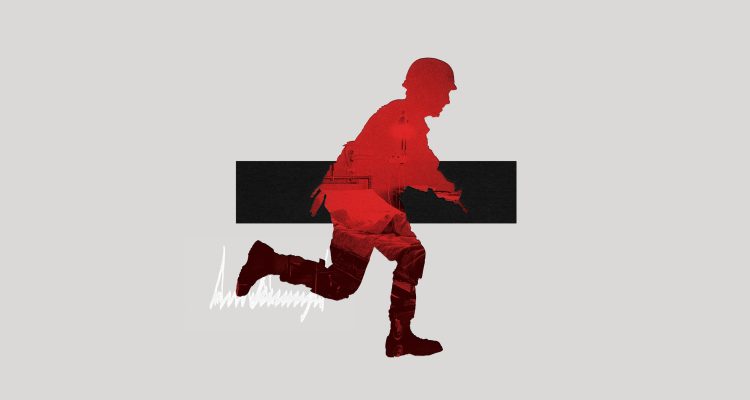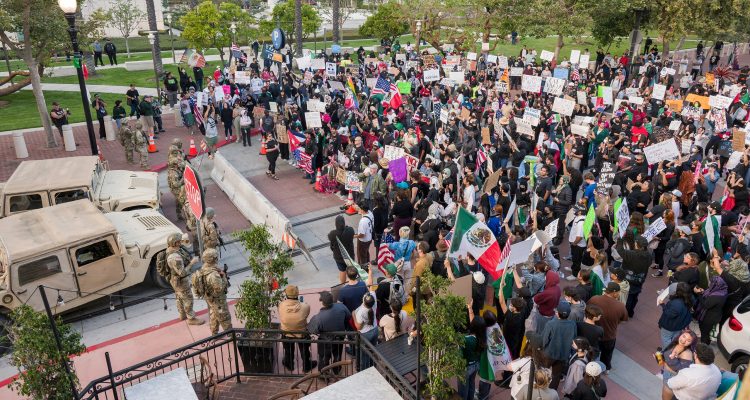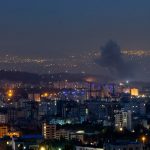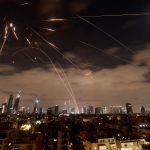On March 5, 2025, Samantha Crowder sat in a corner of her bedroom which she’d turned into a home office, staring in disbelief at a leaked memo. The chief of staff of the Department of Veterans Affairs, where she’d worked for nearly a decade, had notified agency leaders that the V.A. would “aggressively” shrink its footprint. In partnership with Elon Musk’s Department of Government Efficiency (DOGE), the memo said, the V.A. would “identify and eliminate waste” and “reduce management and bureaucracy.” This apparently meant firing about eighty thousand of the agency’s four hundred and eighty thousand workers.
After that, Crowder told me, meetings frequently devolved into discussions about the looming cuts. Her office paused work on a project to speed up the process for granting treatment privileges to new V.A. doctors; hiring was frozen and a number of job offers for doctors had been rescinded, so there was no one to bring on board. (Even after the Trump Administration reversed course on the offers, some doctors declined them.) Meanwhile, a stream of executive orders were affecting federal workers. A return-to-office mandate felt, to Crowder, like an accusation that she wasn’t doing her job from home. The V.A. had hired many people specifically to be remote workers, and the agency was short on desks. One of her colleagues was assigned to the back room of a local post office, and another was placed in the break room of a courthouse. Crowder was a data analyst based in Orlando, Florida; in her view, the downsizing was not being driven by any data. Several meetings discussed an executive order that, among other things, prohibited the word “gender” in any federal document, policy, or system. An application that helped veterans request doctors had to be updated so that it used the word “sex” instead.
The last straw, for Crowder, was a questionnaire from the Office of Personnel Management that asked, among other things, “If [this] position is eliminated, “what (if any) are the direct negative impact(s) to veterans?” Supervisors in her office allowed employees to fill out their own forms. “We want you guys to be able to fight for your own jobs,” a manager told them. There was one day to respond. When Crowder told me all this, she sounded incredulous: “They wanted a review of a half million employees, with a turnaround of less than twenty-four hours?”
In April, Crowder quit her job. “That was honestly one of the hardest decisions I’ve ever made,” she told me. She came from a family of V.A. workers that included her father. She’d started from the “bottom of the bottom,” as a certified nursing assistant, and worked her way up to administrative roles. She decided to forgo several months of pay by refusing a “deferred resignation” plan that Doug Collins, the Trump Administration’s Secretary of Veterans Affairs, had offered employees. “I just wanted to detach myself from the V.A. fast, because I feel like it was important to get information out there as soon as possible,” she said. Then she Googled “How to make a YouTube video.”
The resulting YouTube videos are rudimentary efforts, but they offer an insider’s view. In her first upload, “Let’s Fix the VA by Firing Everyone! (What Could Go Wrong?),” she argues that everyone should care about what’s happening at the V.A. “What’s one way a woman might tell if a man will treat her right? How he treats his mom,” she said. “So let me ask you this: if we can’t get this right for veterans, who can we get this right for?” Elsewhere, she dissected video clips of Collins, such as a Fox News interview that asked him how firing workers would affect V.A. care. Collins said that for the past decade, a “high-risk list” from the Government Accountability Office had included the V.A., and that changes were overdue. But Crowder revealed that among the specific problems cited by the G.A.O. were staffing shortages in mental-health care, workload mismanagement, and a failure to develop a staffing strategy. (The V.A. doesn’t know how many doctors it employs, for example.) “Let’s fix the fire hazards by firing the firefighters,” Crowder said sarcastically. “Then maybe we’ll read the inspection report.”
When I surveyed other V.A. employees about the state of the agency, they shared similar concerns. After speaking with Crowder, I received an unprompted e-mail from a tipster who’d read my reporting on the Trump Administration. The person introduced me to a V.A. clinical psychologist, who spoke on the condition of anonymity. Collins had promised that medical care for veterans would not be affected by any downsizing—and, so far, little downsizing has taken place. But, the psychologist told me, “Veterans are losing access to care because their clinicians are leaving.”
Trump’s gender-related executive order was a particular frustration. “Speaking with veterans directly, I know everything related to transgender veterans’ health was cut instantaneously,” the psychologist said, explaining that support groups were eliminated and access to hormone therapy was reduced. “We’re basically erasing an entire group of veterans.” And, in clinical research, psychologists could no longer mention gender. “We can only use biological birth sex in any of our descriptions,” the psychologist said. “I’m a women’s-health researcher, but I can’t talk about women veterans. I have to talk about females, which is strange, and also not how I collected my data.” When I contacted the V.A. press secretary, Peter Kasperowicz, for comment, he told me, “VA is faithfully and thoughtfully incorporating President Trump’s executive order.”
The psychologist said that employees were worried about surveillance—they were notified in writing, on a slide that I reviewed, that virtual meetings on Microsoft Teams were being transcribed and archived—and were afraid to let their computer mouses stop moving, for fear that they’d be seen as unproductive. (“VA has issued no directive to transcribe and save Teams meetings,” Kasperowicz said.) Although she didn’t think that clinical jobs like hers were in immediate danger, she worried about staffers who don’t see patients. “You can’t run a hospital or health-care system without non-clinical administrative support,” she said. When I asked about over-all morale, the word that came to her mind was “miserable.”
I first started looking into the situation at the V.A. after hearing the story of a patient, William Guild, who was being treated for an aggressive brain cancer. Guild’s wife, Katie Morgan, who has published fiction inThe New Yorkerunder the byline C. E. Morgan, is convinced that her husband’s care has deteriorated since Trump’s Inauguration.
Guild’s three-decade career included nine years onSEALTeam Six, a secretive unit that carries out some of the U.S. military’s most difficult operations, often underwater. He developed claustrophobia, sleeplessness, depression, and P.T.S.D. Upon his retirement from the military, in 2010, he moved to the woods of New Hampshire for a Thoreauvian reassessment of his life. The first time he met Morgan, at a meditation retreat in 2015, they debated Aristotle. By the end of the week, she sensed that they would marry.
Morgan said that her marriage sometimes felt like one long conversation about politics, art, and philosophy. (Guild earned a master’s in theology from Harvard Divinity School, a degree she also held.) Late one night in April, 2024, however, Guild paused midsentence, confused. He stood and paced, repeating the word “this.” Morgan touched his arm. “I don’t think you’re searching for a word anymore,” she said. “Can you nod your head if you think something is wrong with you?” He nodded.
Within days, Guild had had brain surgery and was diagnosed with glioblastoma. The tumor’s location left Guild with full cognitive function, but a slight speech delay. “Now you’re gonna win every argument,” he told Morgan. Days later, doctors ordered an MRI, and Guild, whose muscular frame barely fit in the machine, feared an attack of claustrophobia. He emerged from the scanner unresponsive; he’d experienced a severe brain bleed. Another operation followed. Morgan learned that her husband was effectively paralyzed and unable to speak.
Some studies suggest a correlation between military service and glioblastoma, perhaps owing to carcinogen exposure or traumatic brain injuries. Morgan learned that a frogman on Guild’sSEALTeam Six boat crew had developed the cancer as well. In April, however, the Trump Administration reduced Defense Department glioblastoma research from the ten million dollars it received in 2024 to zero. Only about fourteen thousand Americans are given that particular cancer diagnosis annually. “It’s an orphan disease,” Henry S. Friedman, a neuro-oncologist at Duke University who is leading Guild’s treatment, told me. “It’s a very difficult tumor to treat, because it’s invasive when it’s diagnosed—all over the brain.” Doctors generally remove as much of it as possible with surgery and then administer radiation, chemotherapy, and other therapies.
The special-operations community quickly mobilized to support Guild and Morgan. “SEALs take care ofSEALs, I’ll tell you that,” Jennifer Brusstar, who leads the Tug McGraw Foundation, which is devoted to helping people with brain conditions, observed to me. She connected the couple with a patient-advocacy group for élite service members, which helped get Guild transferred to Walter Reed National Military Medical Center, a preëminent hospital about three hours from their home. “Once we got settled into care, we had a smooth-running machine,” Morgan told me. Guild’s next MRIs looked good, he began speech and physical therapy, and doctors discharged him in the summer of 2024. Then Donald Trump took office for a second time.
The V.A. encompasses the Veterans Health Administration, which treats nine million former military service members across fourteen hundred clinics and hospitals. The system easily outperforms private hospitals in cleanliness, communication, and patient satisfaction; last spring, its outpatient clinics had a ninety-two-per-cent trust rating. Still, its referral processes and eligibility criteria can be opaque. (I’ve been receiving V.A. care for almost twenty years, and the best way I can explain it is: eventually, somehow, you tend to get the help you need.) Historically, veterans have struggled to prove that conditions with multiple causes, such as chronic diseases and cancers, were related to their military service. How do you know that a particular tumor was caused by polluted water, heavy metals, or waste-disposal burn pits, and not genetics or random chance? The V.A. frequently denied disability claims, limiting potential medical coverage and compensation payments. But in 2021 Congress introduced thePACTAct, which aimed to establish a “presumptive” link between certain diagnoses and military service.
Not everyone supported thePACTAct. Some Republicans in Congress attempted to block it over procedural issues and budget concerns, which led to a public outcry. It passed in 2022. The next year, the conservative Heritage Foundation publishedProject 2025, a policy guidebook that President Trump publicly disavowed but has followed in many of its particulars. It argued that the growing number of veterans with access to expanded health benefits “have the potential to overwhelm the VA’s ability to process new disability claims and adjudicate appeals,” potentially causing backlogs and delays. Project 2025 argued that the government could achieve “significant cost savings” by changing its approval criteria, and by preserving benefits (“fully or partially”) only for existing claimants. The basic agreement between the United States and members of the military, at least in theory, is that those who enlist will be cared for if they suffer harm. Project 2025’s architects, some of whom now hold power in the Trump Administration, seemed ready to change the terms of the deal.
Under President Biden, the V.A. hired tens of thousands of workers to treat veterans and handle new claims. But on January 20th the Trump Administration laid the groundwork for firing many federal employees, and weeks later the V.A. dismissed its first thousand workers. Eleven days after that, it fired another fourteen hundred. When the V.A. memo leaked, in March, Doug Collins clarified that he sought to fire seventy-two thousand workers, not eighty. That would still amount to fifteen per cent of the agency.
When Guild developed glioblastoma, the V.A. rated him as a hundred per cent disabled under thePACTAct, assuring him monthly compensation and priority access to medical care. Guild depended on constant home-based occupational and physical therapy. But, after the initial firings, his numerous rehab appointments suddenly stopped being scheduled. Morgan made calls and sent countless e-mails. She described herself as a self-appointed intermediary between the V.A. system in Richmond, Virginia, where Guild receives care, and its affiliates. To schedule appointments, she had to find and connect people who worked at different offices and remind them about her husband’s needs. Still, from February 27th to March 19th, Guild did not receive therapy because an extension of his treatments needed to be approved by the V.A.
Morgan watched, enraged, as Collins defended the V.A. cuts. “The federal government does not exist to employ people,” he said. “We’ll be making major changes—so get used to it.” In her near-daily conversations with V.A. workers, some told her that they feared for their jobs. After several weeks of this, on March 18th, the V.A. finally approved continuation of her husband’s therapy.
According to Morgan’s notes, on May 2nd, a V.A. worker told her that the Richmond system had lost a lot of schedulers and added, “It’s been a nightmare.” Another told her that schedulers had left voluntarily because of the situation “being like it is,” and that “things have gone belly-up.” (In February, the Richmond V.A., driven byDOGEmandates, had terminated several dozen employees, in areas ranging from housekeeping to surgical services. No schedulers were among them, and a federal judge subsequently ordered that they be rehired.)
Today, Morgan is Guild’s full-time caregiver. She estimated that she spends about twenty-five hours a week on health-related administrative tasks, and she teaches half time, “on top of the physicality of caregiving, preparing all the meals, taking care of nutritional needs, cancer needs, handling chemo five days a month, taking care of dogs, and trying to be a parent.” Their son, Liam, who recently celebrated his eighth birthday, is “largely stuck at home with us,” she said. “He’s learning early lessons from this about what marriage means.”
Meanwhile, Guild is working “ferociously” on his recovery, Morgan said, hoping to build some independence. Glioblastoma tumors usually recur in six to nine months; he lives MRI to MRI, in two-month increments. Morgan worries that her husband could lose some of his benefits, which depend in part on thePACTAct, and that if she is unable to return to her professorship full time, they could lose their house. They still encounter occasional scheduling problems. “We’re a really good test case, because we use the V.A. constantly,” she told me. “All this with just, what, twenty-five hundred firings? There are still seventy grand more to go.”
When I approached the V.A. for comment on the state of the agency, Kasperowicz, its press secretary, blamed “nearly all of the department’s most serious problems, such as rising health care wait times, growing backlogs of Veterans waiting for disability compensation, and major issues with survivor benefits,” on the Biden Administration. In response to questions about how downsizing and restructuring might have contributed to Guild’s experience, I received a statement attributed to a local public-affairs officer. “The premise of your inquiry is false,” the statement read. When I asked why the V.A. took so long to approve the request to extend Guild’s therapy, I was told, “No such request was ever made to VA, and VA believes that the request was accidentally sent to a non-VA office.” I checked; someone who works with many V.A. patients, and who is familiar with Guild’s request for an extension of his treatment, confirmed that daily faxes were sent to the Richmond V.A. system.
One of Samantha Crowder’s projects at the V.A. examined problems in the scheduling departments, so I ran Guild’s experience by her. Scheduling departments have been “super understaffed” in recent years, she said, and her research revealed high turnover and low morale. “Good schedulers get burned out, and there’s no way to track productivity,” Crowder told me. “Of course, the threat of being fired has made things worse.”
In the same conversation, she told me that a V.A. center in Florida had to implement weekly town halls after employees expressed suicidal thoughts. A congressional staffer who works with the V.A. confirmed this to me. The suicide rate for veterans is fifty per cent higher than that of the general population, and a quarter of V.A. workers are veterans. Nonetheless, Veterans Crisis Line employees were among the V.A. workers targeted for termination by the Trump Administration. (“A small number of VCL support staff were laid off as part of the probationary dismissals in February, but all of them were offered their positions back within weeks,” Kasperowicz said.)
The last person I spoke to was a V.A. social worker on the West Coast. “I had a colleague that left their position this week,” he said, in May. “A dedicated civil servant. A wealth of knowledge and talent. . . . This is a person who is gay and feels particularly targeted by these new policies.” The social worker was particularly unsettled by an e-mail that Collins sent to the entire agency. Under the subject line “Task Force on Anti-Christian Bias,” Collins directed all employees to report “policies, procedures, or unofficial understandings hostile to Christian views.” The social worker called the e-mail “a bellwether—an indicator of an emboldened point of view with power in the federal system.”
The social worker feared that the V.A. would suffer long-term damage. Employees tend to have a personal connection to the military, he pointed out. “They’ve chosen to do this work out of a sense of service,” he said. Lately, in job interviews, people have been asking him whether, if they’re hired, they’ll have to worry about losing their jobs. “The answer is I don’t know,” he told me. “There’s a prevailing feeling, from my perspective, of the system turning on the people that we serve—and on us.” ♦












